
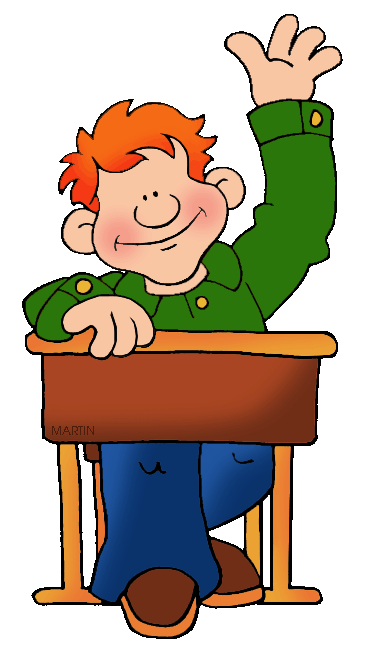 At Sandhurst Primary School, our history curriculum is designed to ignite our pupil’s curiosity about the past.
At Sandhurst Primary School, our history curriculum is designed to ignite our pupil’s curiosity about the past.
In line with the national curriculum, we use carefully sequenced lessons, inspired by the Cornerstones Curriculum, to enable pupils to aim high and build on what they already know and understand, whilst offering an exciting curriculum creating enjoyment within every lesson. In the Early Years, our children focus on the history of their own lives so far. In Key Stage 1, pupils begin to learn about significant people and occasions in the past, progressing to more in-depth exploration of historical periods in Key Stage 2.
Through visiting sites of historical importance and handling artefacts, learners will be inspired and challenged to know more about the past by asking and answering enquiry questions. They will gain coherent knowledge of Britain’s past to enable them to have a clear understanding of chronology. Pupils will develop a respect for historical evidence and make critical use of it to support their learning, whilst thinking, weighing evidence, sifting arguments, and developing perspective and judgement.
Furthermore, pupils will be taught history from all around the globe throughout their time at Sandhurst Primary School, which is key to see how people’s actions have had an impact both positively, including through kindness, and negatively on others and how we can learn from that.
Where appropriate, pupils will be encouraged to apply their reading, writing and mathematical skills, using subject-specific vocabulary whilst presenting their work in written form, communicating ideas, researching in non-fiction texts and presenting and analysing data and figures.
At Sandhurst Primary, history is taught through carefully selected topics as outlined below. The choice of historical periods follows the guidance set out in the national curriculum, with specific details relating to significant events and individuals chosen to present a rich and diverse account of British and world history. Following the Cornerstones Curriculum, all of our history projects are taught in the autumn and summer terms, with opportunities to revisit historical concepts in some of the spring term geography projects.
| EYFS | |||
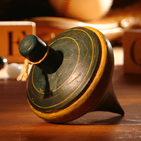 |
Long Ago |  |
On the Beach |
| This project teaches children about how they have grown and changed since they were babies and how life in the past was different from today. | This project teaches children about the plants and animals that live at the seaside. It also explores holidays in the past and the importance of keeping safe in the Sun. | ||
| Year 1 | |||
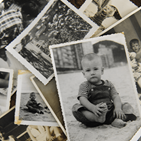 |
Childhood | 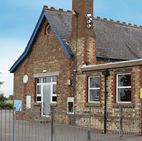 |
School Days |
| This project teaches children about everyday life and families today, including comparisons with childhood in the 1950s, using artefacts and a range of different sources. | This project teaches children about their own school and locality, both today and in the past. They compare schooling in the Victorian era to their experiences today. | ||
| Year 2 | |||
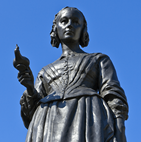 |
Movers and Shakers | 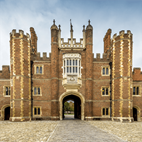 |
Magnificent Monarchs |
| This project teaches children about historically significant people who have had a major impact on the world. They will learn to use timelines, stories and historical sources to find out about the people featured and use historical models to explore their significance. | This project teaches children about the English and British monarchy from AD 871 to the present day. Using timelines, information about royal palaces, portraits and other historical sources, they build up an understanding of the monarchs and then research six of the most significant sovereigns. | ||
| Year 3 | |||
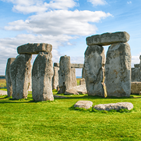 |
Through the Ages | 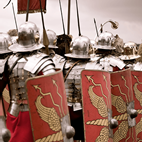 |
Emperors and Empires |
| This project teaches children about British prehistory from the Stone Age to the Iron Age, including changes to people and lifestyle caused by ingenuity, invention and technological advancement. | This project teaches children about the history and structure of ancient Rome and the Roman Empire, including a detailed exploration of the Romanisation of Britain. | ||
| Year 4 | |||
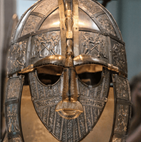 |
Invasion | 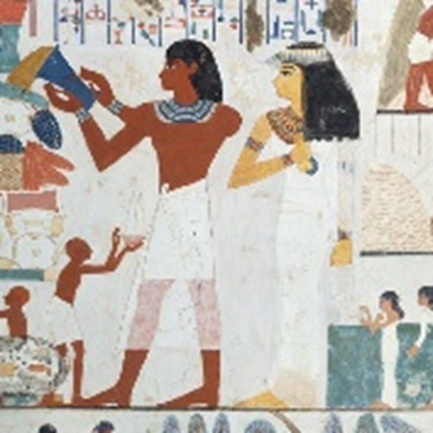 |
Ancient Civilisations |
| This project teaches children about life in Britain after the Roman withdrawal. Children will learn about Anglo-Saxon and Viking invasions up to the Norman conquest. | This project teaches children about the history of three of the world’s first ancient civilisations: ancient Sumer, ancient Egypt and the Indus Valley civilisation. Children will learn about the rise, life, achievements and eventual end of each civilisation. | ||
| Year 5 | |||
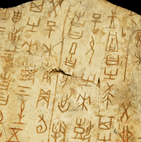 |
Dynamic Dynasties | 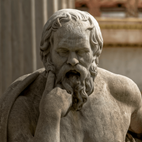 |
Ground Breaking Greeks |
| This project teaches children about the history of ancient China, focusing primarily on the Shang Dynasty, and explores the lasting legacy of the first five Chinese dynasties, some of which can still be seen in the world today. | This project teaches children about developments and changes over six periods of ancient Greek history, focusing on the city state of Athens in the Classical age, and exploring the lasting legacy of ancient Greece. | ||
| Year 6 | |||
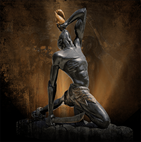 |
Maafa | 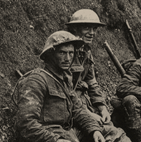 |
Britain at War |
| This project teaches children about Africa past and present, with a particular focus on Benin. It traces the development of the slave trade and explores Britain’s role in the transatlantic slave trade, the causes and consequences of the European colonisation of Africa and the worldwide communities that make up the African diaspora. | This project teaches children about the causes, events and consequences of the First and Second World Wars, the influence of new inventions on warfare, how life in Great Britain was affected and the legacy of the wars in the post-war period. | ||
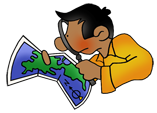
Our curriculum pedagogy is based on four distinct stages (known as the Four Cornerstones) which aim to give clear direction – through a carefully sequenced, interconnected and knowledge-rich planning sequence – for both teaching and learning: Engage – Develop – Innovate - Express
- Engage in memorable experiences that stimulate children’s curiosity, leading them to ask questions and talk about their prior learning.
- Develop new skills and knowledge by delving deeply into a theme, where children make links, create, explore, make, read and write.
- Innovate by returning to prior knowledge and skills so that children can use and apply these in new contexts (in and out of school).
- Express what has been learned by providing opportunities for children to reflect, test their knowledge and celebrate their achievements.
Following our Cornerstones Curriculum, we use quality-assured lesson resources, knowledge organisers, quizzes and question sheet to further support children’s developing historical subject knowledge. The resources contain the essential facts that children need for each history topic, and the quizzes and question sheets are used to assess the children’s understanding.
Our curriculum provides opportunities to see what knowledge children have retained and what skills they have mastered through clear curriculum endpoints which help teachers to make judgments about each child’s progress and attainment. Typically, at the end of each unit, children will complete an assessment that takes the form of a short quiz / series of questions – this is known as an express task. This provides a summative insight that is used alongside outcomes and pupil voice to assess what has been learned.
We want our pupils to develop a love for history and as a result remind them, if they continue to aim high, as a historian, they could become a Museum Curator, an Archaeologist, a family historian, a Member of Parliament, a teacher and many other exciting professions!

Cornerstones Curriculum
We provide a creative curriculum based around the Cornerstones Curriculum, a nationally recognised approach for delivering outstanding learning opportunities for children.
What is the Cornerstones Curriculum?
The Cornerstones Curriculum is a creative and thematic approach to learning that is mapped to the Primary National Curriculum to ensure comprehensive coverage of national expectations. Our new curriculum will be delivered through Imaginative Learning Projects (ILPs) which will provide a rich menu of exciting and motivating learning activities that make creative links between all aspects of our children’s learning.
We believe children learn better when they are encouraged to use their imagination and apply their learning to engaging contexts. Our new curriculum will provide lots of learning challenges throughout the academic year that will require children to solve problems, apply themselves creatively and express their knowledge and understanding effectively across the curriculum.
Cornerstones also provide a rigorous essential skills framework that outlines the end of year expectations in all subjects. These essential skills are tied to activities and are age related so that staff can track children’s progress and identify their individual learning needs.
How it Works?
Children will progress through four stages of learning in each ILP – Engage, Develop, Innovate and Express. To find out more about these stages please click on the link through to Cornerstones website:
https://cornerstoneseducation.co.uk/why-cornerstones/
Please find downloadable PDF versions of the Information available for the Design and Technology Curriculum.
Creativity
| Reception | Year 1 | Year 2 | Year 3 | Year 4 | Year 5 | Year 6 |
| Creativity | ||||||
| Report and conclude | ||||||
| Stories, books and pictures are used to help people to find out about people and events from the past. Share stories and talk about events in the past. | Stories, pictures and role play are used to help people learn about the past, understand key events and empathise with historical figures. Create stories, pictures, independent writing and role play about historical events, people and periods. | Historical information can be presented in a variety of ways. For example, in a non-chronological report, information about a historical topic is presented without organising it into chronological order. Present historical information in a simple non-chronological report, independent writing, chart, structural model, fact file, quiz, story or biography. | Historical information can be presented as a narrative, non-chronological report, fact file, timeline, description, reconstruction or presentation. Make choices about the best ways to present historical accounts and information. | Relevant historical information can be presented as written texts, tables, diagrams, captions and lists. Present a thoughtful selection of relevant information in a historical report, fictional narrative, in-depth study or by answering a range of historical questions. | Sources of historical information can have varying degrees of accuracy, depending on who wrote them, when they were written and the perspective of the writer. Explore the validity of a range of historical reports and use books, technology and other sources to check accuracy. | Sources of historical information should be read critically to prove or disprove a historically valid idea by setting the report into the historical context in which it was written, understanding the background and ideologies of the writer or creator and knowing if the source was written at the time of the event (primary evidence) or after the event (secondary evidence). Think critically, weigh evidence, sift arguments and present a perspective on an aspect of historical importance. |
| Communication | ||||||
| Words that help us to describe the passage of time include yesterday, last week, before and then. Order and sequence a familiar event using words relating to the passage of time, including yesterday, last week, before and then. | Common words and phrases, such as here, now, then, yesterday, last week, last year, years ago and a long time ago, can be used to describe the passing of time. Use common words and phrases relating to the passing of time to communicate ideas and observations (here, now, then, yesterday, last week, last year, years ago and a long time ago). | A year is 365 days and a leap year is 366 days. A decade is 10 years. A century is 100 years. Use the historical terms year, decade and century. | Historical terms to describe periods of time include decade, century, millennia, era, AD, CE, BC and BCE. Use historical terms to describe different periods of time.
Well composed historical questions begin with statements, such as 'how', 'why' and 'to what extent' and should be based around a historical concept, such as cause and effect, significance or continuity and change. Ask well composed historical questions about aspects of everyday life in ancient periods. |
Historical terms include abstract nouns, such as invasion and monarchy. Use more complex historical terms to explain and present historical information. | Historical terms include topic related vocabulary, which may include abstract nouns, such as peasantry, civilisation, treason, empire, rebellion and revolt. Articulate and organise important information and detailed historical accounts using topic related vocabulary. | Abstract terms include nouns, such as empire, civilisation, parliament , peasantry, conquest, continuity, discovery, interpretation, invasion, nation, significance and sacrifice. Use abstract terms to express historical ideas and information. |
Place and Space
| Reception | Year 1 | Year 2 | Year 3 | Year 4 | Year 5 | Year 6 |
| Place and Space | ||||||
| Local History | ||||||
| Explore and talk about important events in the school or locality's history. | Important events in the school's history could include the opening of the school, the arrival of new teachers, special visitors and significant changes to buildings. Describe important events in the school's history. | Commemorative buildings, monuments, newspapers and photographs tell us about significant people, events and places in our local community's history. Describe, in simple terms, the importance of local events, people and places. | National and international historical events, such as wars, invasions, disease, the invention of new technologies and changes in leadership, can have a positive or negative impact on a locality and can shape the beliefs, identity, settlement and culture of people in the locality. Analyse a range of historical information to explain how a national or international event has impacted the locality. | A past event or society can impact a local settlement in several ways, including the layout and use of land in the settlement; changes to the number of people who lived or worked there over time; the creation of human features, such as canals, castles or factories; place names and language. Describe and explain the impact of a past society on a local settlement or community. | Aspects of British history and related sites that may have local significance include, the Norman invasion (Norman castles and settlements), Black Death of 1346–1353 (plague pits), the Wars of the Roses (battlefields) and the Industrial Revolution (coal mines, factories, mill sites, railways and canals). Investigate an aspect of history or a site dating from beyond 1066 that is significant in the locality. | Sources of information for a study of a local town or city include primary sources, such as letters, diaries, official documents, artefacts and buildings that were created at the time of specific events, and secondary sources, such as memorial and commemorative plaques, information books and research produced after the event. Present an in-depth study of a local town or city, suggesting how to source the required information. |
Comparison
| Reception | Year 1 | Year 2 | Year 3 | Year 4 | Year 5 | Year 6 |
| Comparison | ||||||
| Compare and contrast | ||||||
| Describe some similarities and differences between things in the past and the present. | Identifying similarities and differences helps us to make comparisons between life now and in the past. Identify similarities and differences between ways of life within or beyond living memory. | A historical period is an era or a passage of time that happened in the past. For example, Victorian Britain is a period in British history. Describe what it was like to live in a different period. | Throughout history, common areas of human concern include the need for food, survival, shelter and warmth; the accumulation of power and wealth and the development of technology. Explain the similarities and differences between two periods of history. | Characteristics of a civilisation include cities, government or leadership, forms of writing, numerical systems, calendars, architecture, art, religion, inventions and social structures. The form these characteristics take can be similar or contrasting across different civilisations. Compare and contrast two civilisations. | Aspects of history that can be compared and contrasted include rulers and monarchs, everyday life, homes and work, technology and innovation. Compare and contrast an aspect of history across two or more periods studied. | Common aspects of history, such as leadership, belief, lifestyle and significant events, are features of different historical time periods. Many of these threads have features in common, such as the invasion of a country by a leader and an army, but may also have differences, such as the success of an invasion. Compare and contrast leadership, belief, lifestyle or significant events across a range of time periods. |
Significance
| Reception | Year 1 | Year 2 | Year 3 | Year 4 | Year 5 | Year 6 |
| Significance | ||||||
| Significant events | ||||||
| A significant event is something that is important to them or other people. Photographs and videos are used to record these events. Listen to stories and discuss significant events from the past. | Significant historical events include those that cause great change for large numbers of people. Key features of significant historical events include the date it happened, the people and places involved and the consequences of the event. Identify some key features of a significant historical event beyond living memory. | Significant events affect the lives of many people over a long period of time and are sometimes commemorated. For example, Armistice Day is commemorated every year on 11th November to remember the end of the First World War. Explain why an event from the past is significant. | The causes of a significant event are the things that make the event happen and directly lead up to the event. The consequences of a significant event happen after the event and can be short-term, such as people being killed in a battle, or long-term, such as the change in language and society after an invasion. Explain the cause and effect of a significant historical event. | Every significant historical event has a cause or a number of causes, such as the need for power and wealth, retaliation for past wrongs, the need to improve quality of life or the occurrence of natural disasters, such as earthquakes. The consequences are the outcomes of an event, such as changes in power, people being killed or displaced during war, improvements in quality of life or damage and destruction from a natural disaster. Explain in detail the multiple causes and effects of significant events. | Aspects of history are significant because they had an impact on a vast number of people, are remembered and commemorated or influence the way we live today. Explain why an aspect of world history is significant. | Historical narratives can describe long- and short-term causes and consequences of an event; highlight the actions of significant individuals and explain how significant events caused great change over time. Present a detailed historical narrative about a significant global event. |
| Significant people | ||||||
| Some people in history are significant because they did important things that changed the world or how we live. Share stories and talk about significant people who lived in the past. | A person who is historically significant has made big changes in their lifetime, has been a good or bad role model, were known in their lifetime, made people's lives better or worse or changed the way people think. Understand the term significant and explain why a significant individual is important. | Historical models, such as Dawson's model and diamond ranking, help us to organise and sort historical information. Use historical models to make judgements about significance and describe the impact of a significant historical individual. | Historically valid questions relate to aspects, such as significance; time and chronology; continuity and change; comparing and contrasting or cause and consequence. Devise or respond to historically valid questions about a significant historical figure and suggest or plan ways to answer them. | A profile of a leader can include their significant achievements, the events in which they played a part, the opinions of others about the person and the positive or negative consequences of their actions. Construct a profile of a significant leader using a range of historical sources. | Beliefs can prompt an individual to take action, such as to fight for change, fight wars, oppress or free individuals or groups of people, create temples and tombs or protest against injustice. Explore and explain how the religious, political, scientific or personal beliefs of a significant individual caused them to behave in a particular way. | Decisions can be made for a variety of reasons, including belief, lack of options, cultural influences and personal gain. Decisions are influenced by the cultural context of the day, which may be different to the cultural context today, and should be taken into account when making a judgement about the actions of historical individuals. Examine the decisions made by significant historical individuals, considering their options and making a summative judgement about their choices. |
Change
| Reception | Year 1 | Year 2 | Year 3 | Year 4 | Year 5 | Year 6 |
| Change | ||||||
| Changes over time | ||||||
| The way that people lived in the past is not the same as the way that we live now. There have been changes to schools, play activities, toys, food, transport and clothes. Explore and discuss similarities between aspects of their life and life in the past, using books, stories and pictures. | Changes within living memory have happened over the last 100 years and include advances in technology, exploration, workplaces, houses and jobs, leisure, family and social structures. Describe changes within or beyond living memory. | Life has changed over time due to changes in technology, inventions, society, use of materials, land use and new ideas about how things should be done. Describe how an aspect of life has changed over time. | Aspects of history that can change over time include rule and government, jobs, health, art and culture, everyday life and technology. Summarise how an aspect of British or world history has changed over time. | Changes over time can happen rapidly or slowly and are affected by the desire for people to change, their beliefs, the availability of resources and technology, and social and economic circumstances. Answer and ask historically valid questions about changes over time and suggest or plan ways to answer them | Continuity is the concept that aspects of life, such as rule and government, everyday life, settlements and beliefs, stay the same over time. Change is the concept that these aspects either progress and become bigger, better or more important, or decline and become smaller, worse or less important. Frame historically valid questions about continuity and change and construct informed responses. | The causes of significant events can be long-term and revolve around set ideologies, institutions, oppression and living conditions or short-term, revolving around the immediate motivations and actions of individuals or groups of people. These long- and short-term causes can lead to a range of consequences for individuals, small groups of people or society as a whole. Describe the causes and consequences of a significant event in history. |
| British history | ||||||
| Stories, or narratives, can tell us about important things that happened in the past. Listen to and talk about stories describing significant events from the past. | Significant historical events include those that cause great change for large numbers of people. Describe a significant historical event in British history. | Important individual achievements include great discoveries and actions that have helped many people. Describe and explain the importance of a significant individual's achievements on British history. | The cause of the Roman invasion of Britain was to gain land, slaves and precious metals, after conquering many other countries to the east of Rome. The consequence of invasion was conflict with the Celtic tribes that lived in Britain. Over time, many people became Romanised, living in Roman towns and taking on aspects of Roman culture, such as religion and language. However, people in the west of Britain retained their Celtic culture. Explain the cause, consequence and impact of invasion and settlement in Britain.
Significant events or people in the past have caused great change over time. They have influenced how people live today because they have formed countries and boundaries; created buildings and objects that are still used today; helped to improve health, knowledge and understanding through scientific research and discovery and provided inspiration for the way people should live. Describe how a significant event or person in British history changed or influenced how people live today. |
Anglo-Saxons and Scots from Ireland invaded Britain to fight and capture land and goods because the Romans had left. Anglo-Saxons also wanted to find farmland after flooding in Scandinavia. They wanted to make new homes and settlements and eventually settled in kingdoms, first across the south-east and eastern England and then across the whole country. These kingdoms later became the counties of Kent, Sussex, Wessex, Middlesex and East Anglia. Explain the cause, consequence and impact of invasion and settlement in Britain.
Individual events linked to themes, such as the rise and fall of the monarchy, uprisings and rebellions, great inventions and crime and punishment, all show changes in British life over time. Describe a series of significant events, linked by a common theme, that show changes over time in Britain. |
Key aspects of British history include the rise, fall and actions of the monarchy; improvements in technology; exploration; disease; the lives of the rich and poor and changes in everyday life. Create an in-depth study of an aspect of British history beyond 1066. | Significant people, events, discoveries or inventions can affect many people over time. Examples include the invasion of a country; transfer of power; improvements in healthcare; advancements in technologies or exploration. Articulate the significance of a historical person, event, discovery or invention in British history.
The British economy grew between the 16th and 19th centuries due to a range of factors including Britain’s involvement in the slave trade, the plantation economy in the New World, Colonialism, new inventions and the Industrial Revolution. This growth had far-reaching consequences and changed many aspects of people’s lives including the way they worked, travelled and spent their money. Describe the growth of the British economy and the ways in which its growth impacted on British life. |
| Chronology | ||||||
| Put familiar events in chronological order, using pictures and discussion. | Sequencing words, such as first, next, finally, then and after that, can be used to order information chronologically. Order information on a timeline. | A timeline is a display of events, people or objects in chronological order. A timeline can show different periods of time, from a few years to millions of years. Sequence significant information in chronological order. | Dates and events can be sequenced on a timeline using AD or BC. AD dates become larger the closer they get to the present day. BC dates become larger the further away they get from the present day. The year AD 1 marks the birth of Christ in the Gregorian calendar. Sequence dates and information from several historical periods on a timeline. | Key changes and events of historical periods can be placed on a timeline, such as the dates of changes in leadership, key battles and invasions, achievements, scientific developments and deaths. Sequence significant dates about events within a historical time period on historical timelines. | Different world history civilisations existed before, after and alongside others. For example, the ancient Sumer existed from c4500 BC to c1900 BC and the ancient Egyptians from c3100 BC to 30 BC. Sequence and make connections between periods of world history on a timeline. | Timelines demonstrate the chronology and links between key civilisations, events and significant inventions in world history. Articulate and present a clear, chronological world history narrative within and across historical periods studied. |